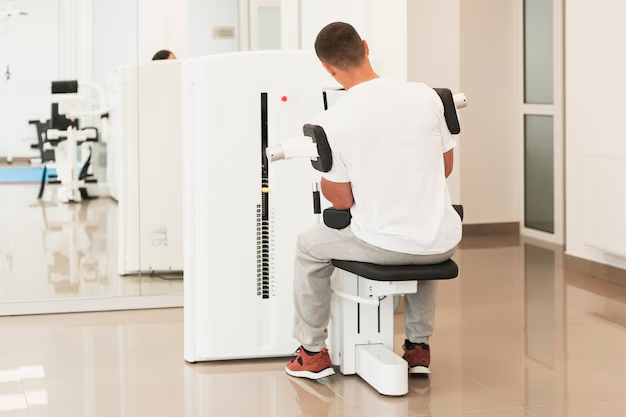Troubleshooting Your Samsung Refrigerator After a Power Outage: A Comprehensive Guide
Imagine this: a powerful storm sweeps through your neighborhood, knocking out the electricity for hours. As the power flickers back on, you may turn your attention to your humming appliances, particularly your Samsung refrigerator, which holds the precious cargo of your household's food supply. Ensuring it's up and running efficiently is crucial. This guide will walk you through how to reset your Samsung refrigerator after a power outage and explore related topics to help you optimize energy use and efficiency in your home.
Understanding Post-Power Outage Issues
Power outages can be disruptive, and their aftermath may leave your appliances acting up. It's essential to recognize common issues your Samsung refrigerator might encounter once the power returns:
- Fluctuating Temperatures: Sudden power cuts and restorations can cause temperature instability in your refrigerator, which may affect food safety and longevity.
- Unresponsive Controls: The control panel might become unresponsive or display error codes needing attention.
- Unusual Noises: Post-outage, you might hear unfamiliar sounds as the compressor struggles to stabilize.
Understanding these issues puts you in a better position to troubleshoot and ensure your refrigerator operates optimally again.
How to Reset Your Samsung Refrigerator
Reseting your Samsung refrigerator is a straightforward task with significant impacts. Here's a step-by-step guide to reset it effectively:
Step-by-Step Reset Process
Unplug the Refrigerator: First, unplug your appliance for approximately 5-10 minutes. This helps clear the memory and allows the system to reset.
Plug Back In: Reconnect the refrigerator to the power source. This is crucial in re-initiating the internal processes of your appliance.
Use the Control Panel:
- On top models, locate the control panel, usually at the front top inside of the fridge. The panel features a power freezer and power cool buttons.
- Press and hold both buttons for about 10 seconds until you notice the panel blinking. This signals that the reset is complete.
Check Error Codes: If error codes persist, refer to the user manual for specific troubleshooting steps or contact Samsung's customer service.
Additional Tips for a Smooth Reset
- Keep Doors Closed: Minimize door openings during the reset process to maintain a stable internal temperature.
- Ensure Stable Power Supply: Use a surge protector to safeguard against future electrical instability.
Enhancing Energy Efficiency Post-Reset
Once your fridge is back to running smoothly, consider how you can enhance its energy efficiency. Here are some practical tips:
Temperature Settings
Maintaining optimal temperature settings is key to energy efficiency. Aim to set the fridge temperature between 37°F (3°C) and 40°F (5°C) and the freezer at 0°F (-18°C).
Regular Maintenance
- Clean Condenser Coils: Dusty coils make the fridge work harder. Clean them biannually for efficiency.
- Inspect Door Seals: Faulty door seals allow cool air to escape, forcing your appliance to consume more power. Check and replace seals as necessary.
Organize Efficiently
- Avoid Overpacking: Overcrowding limits air circulation, affecting the fridge's cooling efficiency.
- Position Wisely: Keep your refrigerator away from heat sources like ovens and direct sunlight.
Troubleshooting Other Common Problems
Even when reset successfully, you might encounter other issues unrelated to power outages. Here’s how to address them:
Ice Maker Problems
If your ice maker isn’t functioning:
- Ensure the ice maker is switched on.
- Check the water supply line for any blockages.
- Clear any potential ice jams in the tray.
Water Leaks
Leaks can be due to:
- A clogged defrost drain, requiring cleaning.
- Incorrect leveling of the refrigerator, needing a quick adjustment.
Unusual Noises
Strange noises may arise from:
- Loose parts which require tightening.
- A jammed fan necessitating inspection and clearing.
Embracing Smart Technology for Better Efficiency
Samsung's range of smart refrigerators offers advanced features like energy monitoring and smart diagnostics. Leveraging these can propel your energy-saving endeavors.
How to Use Smart Features
- Energy Monitoring: Access real-time data on energy consumption, enabling informed adjustments for better efficiency.
- Smart Diagnostics: Use your smartphone to connect to your fridge, instantly diagnosing any issues without needing an expert on-site.
Stay Prepared for Future Power Outages
To minimize disruptions during potential future outages, adopt the following strategies:
- Surge Protectors: Investing in surge protectors can prevent voltage spikes from damaging your fridge.
- Backup Power Solutions: Consider alternative power sources such as generators to maintain appliance functionality when the main power is cut.
Key Takeaways for Resetting and Maintaining Your Samsung Refrigerator
Here's a quick summary to ensure your Samsung fridge stays in top condition post power-outage:
- 📌 Quick Reset: Unplug, wait, and restart.
- 🌡 Optimal Temps: Fridge 37°F-40°F, Freezer 0°F.
- 🚫 Keep Closed: During reset, limit door openings.
- 🧽 Regular Maintenance: Clean coils and check seals.
- 📊 Smart Features: Use for diagnostics and efficiency.
- ⚡ Power Backup: Surge protectors and generators keep you ready.
Keeping these strategies in mind ensures your Samsung refrigerator runs efficiently while conserving energy and maintaining food quality. Effective management of energy use and appliance health not only saves costs but also contributes to environmental sustainability—an all-around win for you and the planet.
